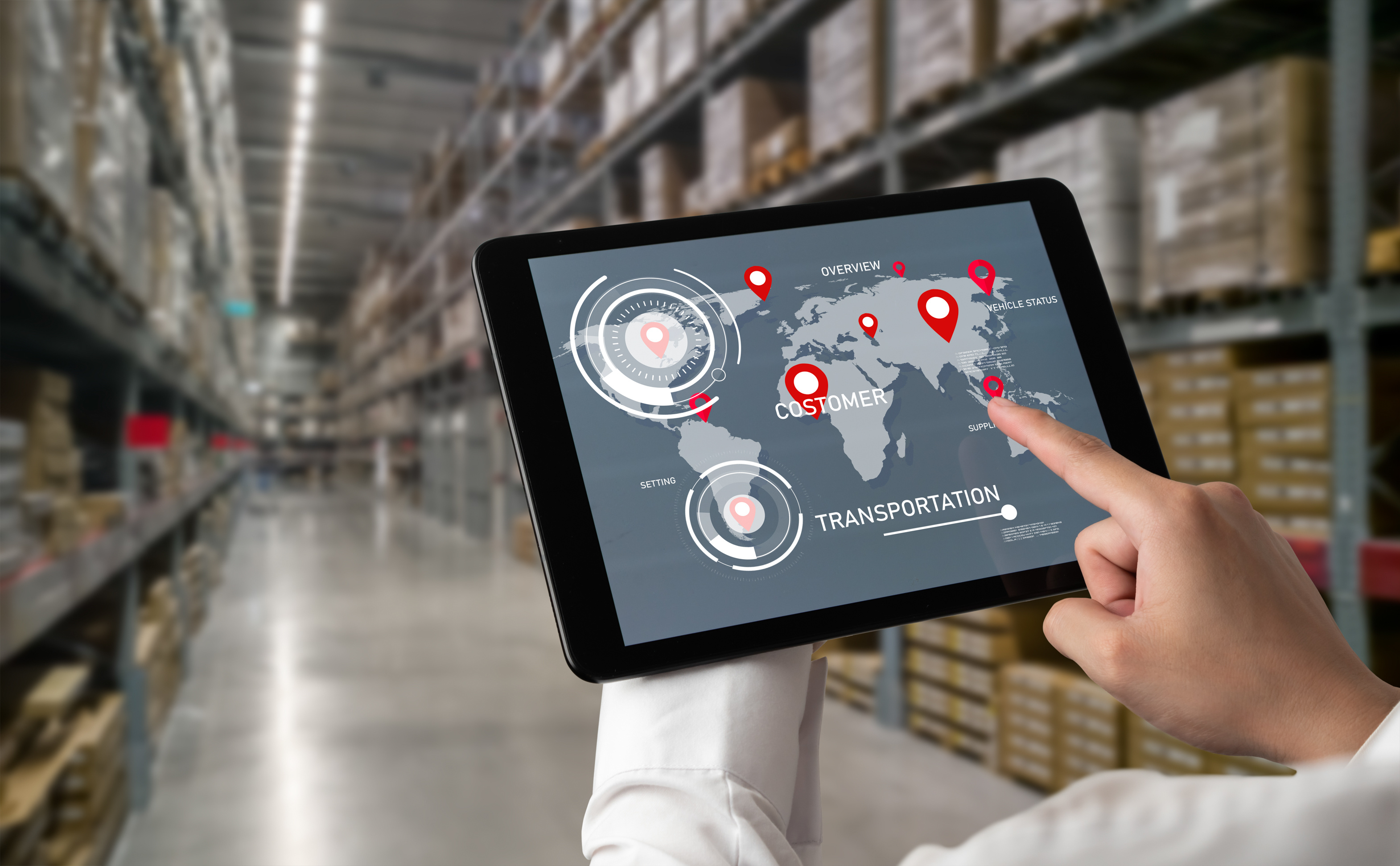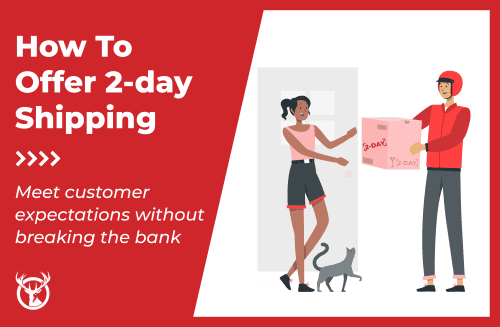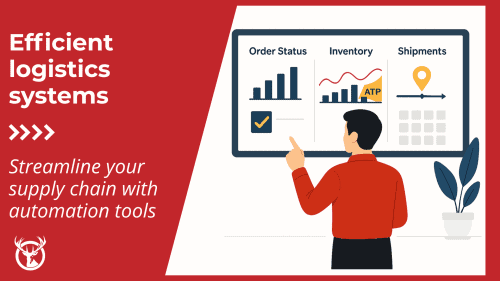If you import products with low retail value from other countries, the Customs and Border Protection’s (CBP) Section 321 provision can help lower the taxes and duties you pay on some imports. Specifically, it’s designed for low-value shipments that have an aggregate fair retail value of up to $800, known as the “de minimis threshold.”
Let’s look at what the provision covers and who it can help. This guide provides a general overview, but we recommend doing additional research on Section 321 to see if you and your products qualify before making any business decisions.
What is Section 321 Entry Type 86?
Section 321 Entry Type 86 allows businesses to import a low value shipment of goods duty-free into the U.S. when they have an aggregate fair retail value of $800 or less (the “de minimis threshold”). Eligible informal entry shipments can be imported by air, land, or sea and use all commercial ports of entry.
It relies on CBP’s Automated Commerce Environment (ACE), an automated broker interface that uses advance data entry to speed up how quickly shipments move through customs.
At the present moment, customs brokers and ABI self-filers are directly impacted by the Type 86 entry of Section 321, but the low value ceiling makes it a very enticing prospect for many eCommerce companies.
Is Section 321 mandatory?
Although trade laws may change in the future, Section 321 is currently optional for the goods you import (considered a voluntary test), and anyone using it is considered a “test participant.”
At this point, it is unclear if Section 321 Entry Type 86 shipments introduce any additional risks beyond non-compliance with its one-shipment-per-day limitation. Evaluate Section 321 carefully using the same metrics that you apply to other imports.
Notably, eCommerce companies should make sure to provide accurate information for their shipments. Like other imports, inaccurate data, improper documentation, and other such information can lead to cargo holds or seizures. Section 321 also doesn’t remove other requirements or limitations, such as intellectual property compliance.
Please continue to monitor for updates
There’s one potential area of uncertainty that companies and their partners should review regularly. CBP generally requires you and your supply chain partners to deliver advance data on Section 321 goods before they arrive at any entry location. Every document needs to be filed prior to arrival, but different rules and requirements may govern how each entity in your supply chain provides that data.
Currently, there’s not any specific requirement governing Section 321 advance data submission. However, due to the program’s increased usage, it wouldn’t be surprising if its regulatory requirements increased in the near future.
Section 321: Terms and conditions apply
Section 321 Entry Type 86 is growing, allowing more companies to use the program for their goods. In 2019, CBP expanded eligibility for informal entry to include cosmetics, food products, and other smaller groups typically controlled by Partner Government Agency (PGA) regulations.
While eligible goods are increasing, there are some standard terms and conditions that importers, shippers, and their partners should know.
Price and U.S. regulations
Section 321 entries can often be subject to a high degree of scrutiny from CBP. Reviews and checks primarily focus on the value of the goods being imported to make sure they don’t cross the $800 de minimis threshold. CBP uses a mix of models and price estimates to determine value, including comparing your products to similar goods or prices from other vendors that sell the something similar.
It’s also worth noting that a variety of exemptions and exceptions apply to Section 321 Entry Type 86. Alcoholic beverages and tobacco products are generally ineligible, as are most products and goods governed by anti-dumping and countervailing duties (AV/CVD). Your goods may be ineligible if their product categories require inspection or if there are governing import quotas for those products and categories. Your goods may also be ineligible if they have an applicable Federal Excise Tax.
Shipment limitations
There are two significant shipment limitations to consider, covering how and how often you import goods. The first thing to note is that merchandise imported by mail is generally exempt from Section 321 Entry Type 86. The second consideration is that you can only apply a Section 321 entry type to a single order per day. So, if you’re using multiple carriers or freight forwarders, you need to make sure you don’t have two trying to use Section 32 entry simultaneously.
A note about China
Perhaps the best news for eCommerce companies is that Section 321 overrides many Section 301 import duties related to China. If your goods meet the aggregate de minimis threshold of $800 or less, you can avoid the broad range of importer taxes and tariffs. That can likely be significant savings for many eCommerce companies.
3 benefits of Section 321
Reduced costs
Perhaps the biggest benefit of using Section 321 shipments is the potential reduction of import costs. These shipments are duty-free with no tax imposed, and you may even avoid the Section 301 tariffs if you import from China.
For many companies, overseas manufacturing provides access to lower-cost options. If that’s true for your business, going for Section 321 Entry Type 86 shipments might allow you to lower multiple cost factors.
Fewer delays
Another significant improvement of Section 321 is that it reduces your paperwork burden and can minimize the time your shipments are in customs. Your eCommerce fulfillment partners can also automate some of the document processing and other required data sharing, allowing your goods to clear customs faster and avoid common delays.
ACE entry prep
CBP’s automated broker interface, known as the Automated Commercial Environment (ACE), makes it easier for companies to secure more rapid clearance processing and compliance. Its web portal allows trade companies, government agencies, and CBP to communicate, and you can use it to access customs reports. The portal is free and well-suited for low-volume companies. Adopting ACE for your low-value shipments can help speed up your supply chain.
As you grow and increase your import volumes, understanding ACE makes it easier for you to secure automation and integration tools. CBP-approved service providers can help you use preset shipment details and automate other tasks that involve repetitive manual data entry requirements for higher volumes.
How should you declare Section 321?
In many cases, the shipment of your goods valued at or under the $800 de minimis threshold can enter the country duty-free without formal entry. If your goods do require an eManifest, you’ll need to directly let CBP know that you want a Section 321 entry.
When your shipment requires an ACE eManifest, these are the declaration steps you may need to follow:
- Select the “Section 321” option on the ACE manifest.
- Provide the number of goods in the shipment.
- Include all required details, especially value, shipper, consignee, and country of origin.
- Submit the eManifest
- Truck: The carrier must file the ACE manifest as intangible goods/Section 321
- Ocean: Importer Security Filing and Additional Carrier Requirements (commonly known as “10+2”) are still required. Generally, you’ll need to present an arrival notice and invoice in person, and stamped copies need to be brought to CFS warehouses.
- Air: Airline manifests should list goods as intangible goods/Section 321
Freight forwarders and customs brokers can help you with the documentation and automation to support some of the more considerable benefits of Section 321. They can also help manage your overall supply chain and make sure you avoid penalties related to making multiple Section 321 claims in a single day.
Best practices and due diligence
A strong supply chain can make a huge difference in your efforts to capture the Section 321 savings. Here are a few additional things to keep in mind:
- Specify which shipment will make the Section 321 claim each day and notify that eCommerce fulfillment partner.
- Get partners to only make a Section 321 claim when you specifically tell them to do so for a shipment.
- Ask partners to create formal entries for every other shipment you have each day.
- Try to link your eCommerce fulfillment network and create clear lines of communication for your freight forwarders, customs brokers, and carriers.
- Minimize the number of customs brokers you use to keep import and export filing consistent.
- Create a clear audit trail for your shipments, especially if you have high volumes of low-value shipments.
How can Red Stag Fulfillment help you?
Importing goods to the U.S. can be tricky. It often helps to have a trusted partner with established relationships in the freight forwarding space and a domestic footprint for fulfillment support. Red Stag helps companies by offering a reliable US fulfillment network strategically designed to keep products close to customers and drive down your costs.
Our eCommerce fulfillment specialists can help you understand current regulations in the US, like Section 321, so you can make the most of the savings opportunities they provide while keeping your business healthy and your customers happy.

















